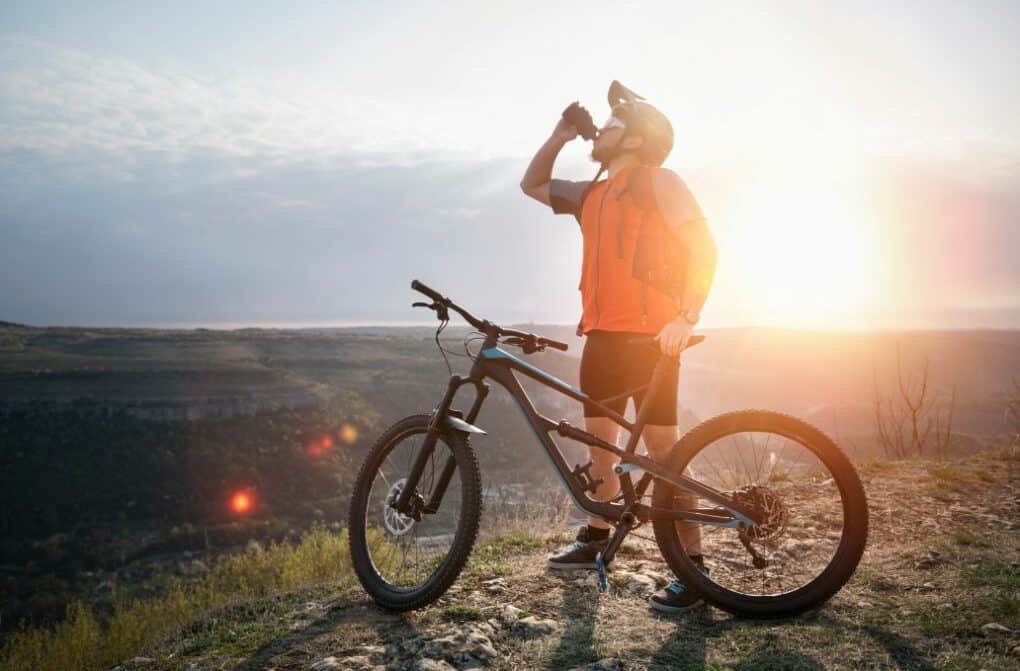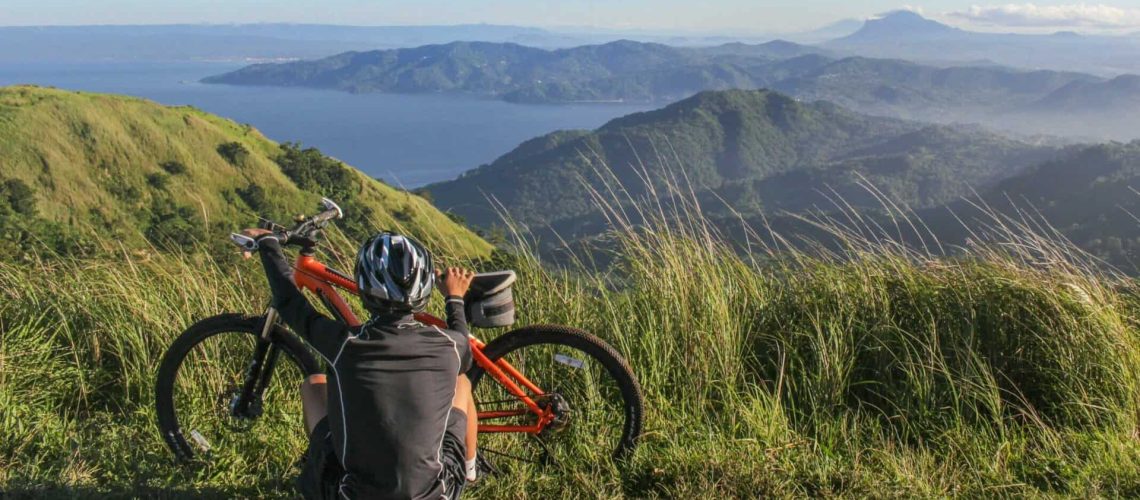When mountain biking, mastering certain mountain biking techniques can make a huge difference in your abilities in terms of conserving energy, improving endurance, and enhancing your overall safety. Whether you’re cruising along a singletrack trail or tackling challenging terrain, applying these techniques can elevate your riding experience and performance.
Just like with street cycling, you should familiarize yourself with essential mountain biking skills to ensure you stay safe and healthy. Here’s a more detailed guide to help you get the most out of your rides:
Pacing
Pacing yourself effectively is crucial for maintaining energy throughout long and tedious rides. Begin your ride at a slower pace and more relaxed body position to allow your muscles to warm up, then gradually increase your speed. This approach helps you avoid early fatigue and ensures you have enough energy for the entire ride.
Monitor your exertion levels and adjust your pace accordingly. If you notice signs of tiredness, such as heavy breathing or muscle fatigue, ease up on your speed. Maintaining a steady, manageable pace not only helps with endurance but also reduces the risk of injury.
It’s also important to plan your ride with breaks in mind. Schedule rest stops to stretch and rehydrate. Use these breaks as an opportunity to assess your energy levels and the status of your mountain bike. Keep in mind that bringing a small toolkit and spare parts can also come in handy for unexpected repairs on your mountain bike or that of others who may need help on a trail.
Cadence
A high cadence, or pedaling speed, is essential for both the efficiency and control of a mountain biker. Pedaling at a higher cadence reduces the amount of force you need to apply, which helps prevent fatigue and keeps your legs from getting overly tired. It also improves your bike handling, particularly on technical terrain where precise control is key.
Work on finding a consistent cadence that feels natural for you. Practice maintaining this rhythm to develop muscle memory and improve your mountain bike skills for this ride and those to come.
While mountain biking, if you find yourself struggling to keep up the cadence, consider shifting to a lower gear. This adjustment makes pedaling easier and helps you maintain your rhythm without overexerting yourself.

Master Your Mountain Bike: Brake Early
Braking early is a fundamental technique that helps mountain bikers to conserve energy and maintain control. Instead of waiting until the last moment to brake, anticipate changes in terrain and slow down proactively.
This approach reduces the energy needed to stop and start repeatedly, allowing you to maintain a smoother and more controlled ride.
When you do need to brake, apply pressure gradually and evenly to both the front and rear brake levers. This technique prevents skidding and helps you stay balanced. Familiarize yourself with your bike’s braking system to understand how much pressure is needed in different conditions.
Practice braking in various scenarios to build confidence and improve your reaction time. Mastering your mountain bike braking also makes you a more considerate rider to other mountain bikers on the trail as you improve your safety and awareness.
Body Position: Keep Your Weight Back!
You may think that mountain bike positioning is what matters most when you ride, yet the body position of the mountain biker is just as important to be aware of. When descending, shifting your weight toward the rear wheel is crucial for maintaining control and stability. This position helps keep the front wheel grounded and prevents it from lifting off the ground, reducing the risk of flipping over the handlebars.
On steep descents, you may need to crouch further back and lower your center of gravity. Use your legs as shock absorbers to smooth out the ride and absorb impacts from rough terrain. Conversely, when climbing, shift your weight forward to increase traction on the front wheel and maintain better control.
Use Your Gears
Proper gear use can significantly impact your riding efficiency. On steep climbs or rougher terrain, shifting to a lower gear allows you to pedal more slowly and maintain control without tiring yourself as quickly. This adjustment helps you tackle inclines more effectively and reduces strain on your legs.
When descending, switch to a higher gear to increase your speed with less effort. This gear allows for a smoother, more controlled descent while preventing your legs from spinning too quickly. On flat or rolling terrain, find a gear that balances comfort and efficiency, allowing you to pedal without straining.
Stand Up Occasionally
Another mountain bike technique is to occasionally stand up on your pedals. This provides several benefits during your ride. It gives you a better view of the trail ahead, helping you navigate obstacles more effectively. Additionally, standing allows you to engage more of your leg muscles, which can reduce fatigue and provide a temporary break from sitting.
When standing, keep your knees slightly bent and your weight balanced evenly between the pedals. This position helps maintain stability and control, especially when navigating rough or uneven terrain. Practice standing and sitting smoothly to develop your mountain biking skills and incorporate them seamlessly into your riding style.
Stay Hydrated & Bring Snacks
Staying hydrated is vital for maintaining the performance and health of mountain bikers during a ride. In hot or humid conditions, dehydration can quickly set in, leading to decreased energy and an increased risk of heat-related issues. Carry multiple water bottles and drink regularly, even if you don’t feel thirsty.
Bring along nutritious snacks to keep your energy levels stable. High-protein foods like nuts, trail mix, or energy bars are excellent choices. These snacks provide quick energy and help prevent the fatigue that comes from long rides.
Be vigilant about recognizing signs of dehydration or heat exhaustion, such as dizziness, nausea, or excessive sweating. If you experience any of these symptoms while mountain biking, find a shaded area to rest and hydrate. Knowing how to manage your hydration and nutrition effectively can make a significant difference in your overall riding experience.




